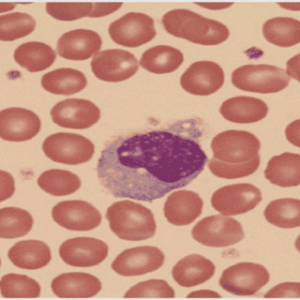(Downloads - 0)
For more info about our services contact : help@bestpfe.com
Table of contents
Table of contents
Résumé en français
1. Introduction
2. Résultats
2.1. Localisation de la biosynthèse du sclaréol
2.2. Identification de l’origine métabolique du sclaréol par marquage isotopique
2.3. La biosynthèse du sclaréol est-elle régulée par les jasmonates ?
2.4. Etude de la diversité naturelle de la sauge sclarée
3. Revue de la littérature
4. Perspectives
Introduction
1. Ambergris and sclareol
1.1. The search for substitutes to ambergris
1.2. Interest in increasing sclareol global production
2. Clary sage
2.1. Botanical description of clary sage
2.2. Sclareol biological function in clary sage
2.3. Clary sage commercial use
2.4. First advances in clary sage genetics and biotechnology
2.5. Clary sage breeding in France
3. Terpene biosynthesis and function in plants
3.1. Specialized metabolism and terpenoids
3.2. The diverse biological functions of terpenes
3.3. Industrial exploitation of terpenes
3.4. Terpene biosynthesis
3.5. Terpene biosynthesis regulation
4. Glandular trichomes
4.1. Capitate and peltate glandular trichomes of the Lamiaceae
4.2. Clary sage glandular trichomes
4.3. Genetic control of glandular trichome development
5. Terpene production by clary sage
5.1. Essential oil production in aerial parts
5.2. Sclareol biosynthesis and secretion
5.3. Terpene production in roots
6. Aim of the project
Chapter 1 Mass spectrometry imaging to localize sclareol biosynthesis
1. Introduction
2. Materials and methods
2.1. Plant material
2.2. Scanning electron microscopy
2.3. Metabolite localization by LDI-FT-ICR
2.4. Sclareol and linalyl acetate quantification by GC-MS
3. Results
3.1. Different accumulation patterns for sclareol and linalyl acetate
3.2. Distinct roles of different trichome types in sclareol production
3.3. A clary sage glabrous mutant produces less sclareol and linalyl acetate
4. Discussion
4.1. Sclareol is mainly produced by glandular trichomes
4.2. Some sclareol could also be produced by other epidermal cells
4.3. Engineering higher glandular trichome density to increase sclareol yield
Chapter 2 A retro-biosynthetic approach to decipher sclareol metabolic origin
1. Introduction
1.1. Metabolic crosstalk between MVA and MEP pathways
1.2. Towards clary sage metabolic engineering
2. Materials and methods
2.1. Plant material
2.2. Treatment with MVA or MEP pathway-specific inhibitors
2.3. Sclareol and linalyl acetate quantification by GC-MS
2.4. Isotope labeling and analysis by 13C-NMR or GC-MS
3. Results
3.1. Sclareol and linalyl acetate are highly abundant terpenes of clary sage calyx surface
3.2. Sclareol and linalyl acetate are MEP-derived terpenes
3.3. Comparison of results obtained for sclareol and linalyl acetate
3.4. The case of the acetate group of linalyl acetate
3.5. The mixed origin of the sesquiterpene β-caryophyllene
4. Discussion
4.1. Biosynthetic origin of mono-, sesqui- and diterpenes in clary sage and other plants
4.2. Metabolic engineering of terpene production in plants
4.3. Perspectives for clary sage metabolic engineering
Chapter 3 Is sclareol biosynthesis regulated by jasmonates?
1. Introduction
1.1. Regulation of plant specialized metabolism by jasmonates
1.2. How to use jasmonate signaling to enhance the production of compounds of interest
1.3. Regulation of clary sage specialized metabolism by jasmonates: state of the art
2. Materials and methods
2.1. Calyx development stages
2.2. MeJA treatment by feeding
2.3. MeJA treatment by spraying
2.4. Sclareol and linalyl acetate quantification by GC-MS
3. Results
3.1. Regulation of sclareol biosynthesis during calyx development
3.2. MeJA treatment on flowers by feeding
3.3. MeJA treatment on flowers by spraying
4. Discussion
4.1. MeJA apparently does not impact sclareol production, but further protocol optimization is needed
4.2. Other potential ways to manipulate sclareol biosynthesis regulation
Chapter 4 Clary sage natural diversity
1. Introduction
1.1. The use of natural genetic diversity for breeding
1.2. Impact of environmental conditions on terpene production and genetic diversity
2. Materials and methods
2.1. Plant material
2.2. Genetic diversity analysis
2.3. Field trial
2.4. Sclareol and linalyl acetate quantification by GC-MS
3. Results
3.1. Croatian populations show genetic polymorphism in MEP pathway genes
3.2. Choice of the populations to be analyzed in the field
3.3. Comparison of flowering date and metabolite content of the different populations
4. Discussion
4.1. Complex relationships between genetic diversity, chemical diversity and environmental conditions
4.2. Perspectives for the study of clary sage natural diversity
4.3. Vatican White plants flower earlier and produce less specialized metabolites
Conclusion
1. Context and objectives of the project
2. Perspectives for research on sclareol production in clary sage
3. Perspectives for clary sage genetic improvement
Annex
Review: Genetic control of glandular trichome development
1. Introduction
1.1. Why study the genetic control of glandular trichome development?
1.2. Which species could serve as model(s)?
2. Description of glandular trichome morphology and development
3. Genes controlling glandular trichome initiation
3.1. Transcription factors
3.2. Cyclins
3.3. Regulatory complexes
3.4. Genes involved in hormonal signaling
4. Genes controlling later steps of glandular trichome development
4.1. Cytoskeleton regulators
4.2. Cuticle deposition regulators
5. Evolution of glandular trichome development regulators
5.1. Evidence supporting the conservation of glandular trichome development regulators in the Solanaceae
5.2. Some regulators appear to be conserved in distant plant families, while the others are likely to have evolved independently
5.3. Different scenarios for the evolution of glandular trichome development regulators
6. Perspectives
References



